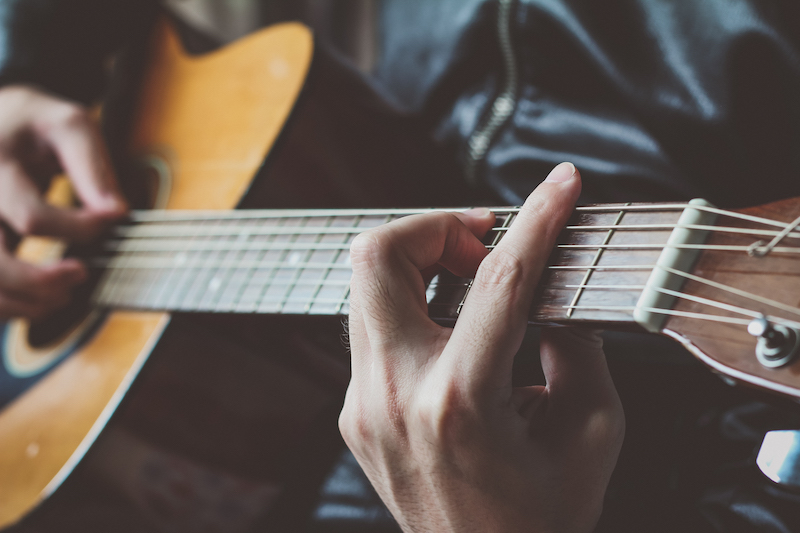Arpeggio is a word that describes playing several notes of a chord in rapid succession.
The arpeggio is, therefore, a different way of playing a chord, without the need to play notes at the same time.
The arpeggio is considered very useful because it can be used to play a chord in any instrument: in a guitar or piano (instruments normally capable of playing chords), but also on any instrument such as a saxophone, a flute, or a violin.
Because of this characteristic, a lot of solo music is concerned with playing arpeggios. Using this strategy, one can play pretty much any chord in the form of a solo.
Conversely, you can also make your solos more connected to the chords you’re using, since you’re essentially playing the chord notes.
Playing Arpeggios on the Guitar
Playing arpeggios on the guitar is as easy as playing any other kind of solo. However, you need a lot of practice to do it quickly and effectively.
In the same way that you need to practice playing chords (several positions or fingerings), you also need to spend the time to learn how to play these chord in the form of arpeggios.
Notes in an Arpeggio
The first step in learn to play arpeggios on a guitar is to understand which notes are included.
These notes are the same as the notes in a chord. For example, in a C major chord the notes are C, E, G. The arpeggio consists of playing these there notes in succession.
You can do this in different ways, since you can decide about the sequence of notes. For example, you can play in reverse (G, E, C), or with the third in the beginning (E, C, G). That would be called an inversion of the original chord.
Because there are so many possible sequence of the same notes, practicing arpeggios is a form of determining the best way to organize these notes.
Four Note Arpeggios
This becomes even more interesting when we add other notes to the base chord.
For example, if you add the seventh, then you have a four note arpeggio that gives you even more options to determine the arpeggio sequence.
Let’s see for instance the Am7 chord. This chord has the following notes: A, C, E, and G. The typical way to play this chord is the following:
o|--|--|--|- E -|o-|--|--|- C o|--|--|--|- G -|--|o-|--|- E o|--|--|--|- A x|--|--|--|-
When playing this chord as an arpeggio, we have the same four notes available. However, we’re not bound to play then in the same positions as the diagram above. You have much more freedom.
For example, you can use the following positions:
o|--|--|o-|- E,G -|o-|--|--|- C o|--|o-|--|- G,A -|--|o-|--|- E o|--|--|o-|- A,C x|--|--|--|-
Notice that now you can play two notes in the same string. This happens because you don’t need to play them at the same time. You can select the notes in sequence, using more than one note per string as needed.
This gives you a lot of possibilities for playing arpeggios, way more possibilities than you have for chords.
Learn More
If you want to learn more about arpeggios, chords, and other guitar topics, download now the free lessons for guitar. I prepared this free material to cover most important topics for guitar players. The course is free, and will be delivered to your email.
GGet Now Your Free Guitar Course
